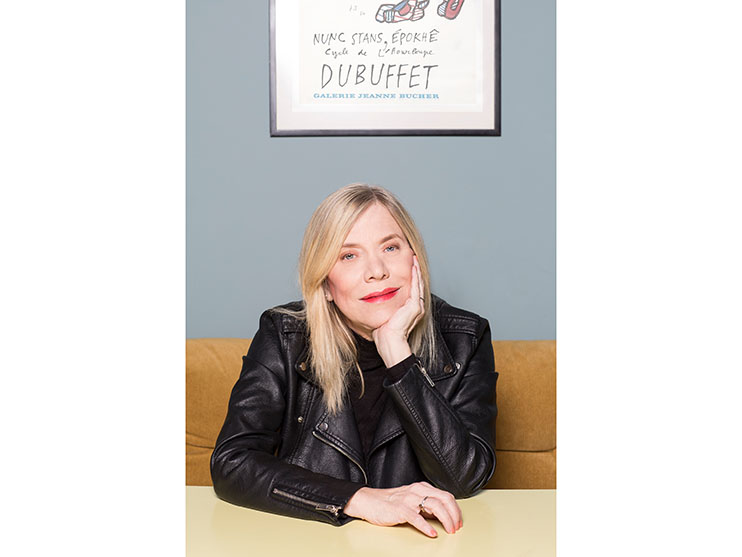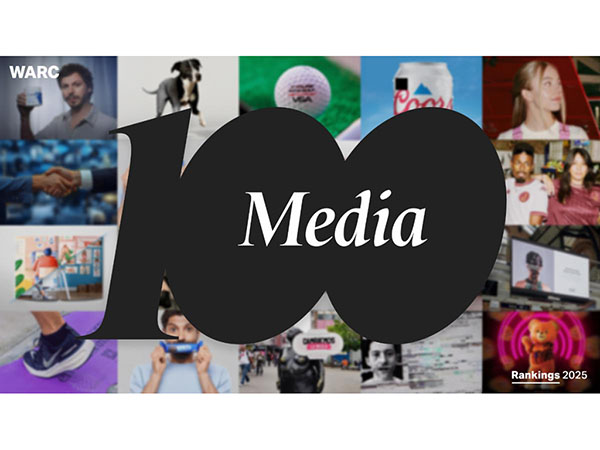News - Advertising
Marian Salzmann: ‘We’ve Come To Expect The Unexpected, And It’s Not All Bad’
by Ghada Azzi
July 2, 2020
THE NEW 4 CS
As a matter of fact, Salzmann stressed on the fact that we’re presented with an opportunity to adapt to, but also shape, the world that awaits us.
She characterizes the pre-COVID-19 era as ushering in an end to four big pillars of public discourse, the 4 Cs, being: Civility, Compromise, Constraint, and Conversation.
During a time when a business as usual mentality is a risk and tried and tested methods go out the window, we’re seeing so many businesses/brands stepping up, coping and creating examples and how this global pandemic might serve as a sort of reset— shepherding in a new era marked by the new 4 Cs. Crises can bring out the worst in people, she acknowledges. Yet they can also bring out the best. “What we’ve seen during this crisis are examples of the very things that can inject more hope in the future.
“I think it’s possible that we will witness a return to civility in our conversations, tempering the combative exchanges so common in the digital age,” says a woman full of hope and optimism.
VIRTUAL HAS BECOME VITAL
Many of us had a sneaking feeling that screen-based living was a poor substitute, a lazier, morally inferior version of the “real life” that “should” take place face-to-face with physical objects in physical space. The COVID-19 crisis has fundamentally reframed that view, she says.
“The online world has become our lifeline. In the grip of this pandemic, it’s no longer just how we communicate and entertain ourselves; it’s how we do our jobs or attend school, procure our supplies, and reach out for help. As important, it is the only way in which we can interact with our fellow humans without fear of contracting or passing on the virus. Even as people are keeping their physical distance, they’re managing to spend time together, thanks to social media. Virtual has become vital,” Salzman asserts.
“I think that we will remember that and that we will turn to the virtual more readily for functions we may not have done pre-COVID-19. More people will work remotely more often. More people will conduct business online than did previously—more of us will take our doctors’ appointments online, more will take advantage of online therapy, more will work with professionals like tax preparers online.
“A lot of us are on what I like to call QST (Quarantine Standard Time) as our new normal. We’re connected around the world at all times, thanks to the digital workplace and our global nature. I think—or at least sincerely hope—that the greater sense of camaraderie and connection will be a lasting effect of these strange days we have all experienced together,” she says. “That connection is very real; we call it “social solidarity.”
All through her thoughtful talk, Salzmann reflected on how brands and companies should be adjusting to the new normal. Though the future is uncertain, there are things that can help guide brands navigate the new normal.
“As communicators, we must strive to provide the level of engagement that serves not only the mind, but also the heart and soul.”
ADAPTING TO THE NEW NORMAL - AGILITY
“In light of the current crisis, there is no time to wait for companies to put together lengthy assessments of what they should do, when, and what they’ll get in return,” she points out. “We need immediate action that’s far bigger than anything a company would contemplate under less extreme circumstances.”
Even after the pandemic has receded, businesses and other organizations will need to recognize that their old continuity plans require an overhaul. In some categories, businesses unable to pivot quickly and well are going to have an especially tough time surviving.
For Salzman, it’s been fascinating to watch those and others that are responding to the new normal most quickly. The ability to pivot, revamp, and reimagine is critical indeed. And there will be plenty of lessons to be learned from those entities that have shown greatest agility during the shutdown.
Salzman seizes the opportunity to praise reactive, responsive and compassionate marketing, as she has been impressed with the businesses that have reinvented themselves temporarily to produce critical needs in the fight against COVID-19. Among the many brands who have stepped up, she mentions Bauer who has switched over from making ice hockey helmets to producing protective face shields. Breweries and distilleries around the world have produced hand sanitizer—as has Philip Morris International at some of its factories. Rolls-Royce, Ford, GM, Fiat, Nissan, and Tesla are among the automakers that churned out ventilators, protective face masks, and face shields. And Virgin Orbit has manufactured bridge ventilators.
Kering SA (think: Balenciaga, Saint Laurent) has switched over to the production of surgical masks. UPS assisted with test kit deliveries and transporting samples to labs. Microsoft created an online map that provides up-to-date information about confirmed COVID-19 cases worldwide. Facebook offered the premium version of its workplace chat service, Workplace Advanced, for free to emergency services and government organizations for 12 months. Slack offered free upgrades to paid plans for teams working on coronavirus research, response, or mitigation.
“I appreciated what many of these brands brought to my life even pre-pandemic, but I’m seeing them in a new and definitely more flattering light now,” Salzmann candidly admits, while reasserting that from now on it’s mandatory for brands to prioritize purpose beyond profit.
“We need to communicate in a way that combines information and need, using a synthesis of feeling and facts.”
LEAD WITH EMPATHY
Salzman insists that this pandemic will change our lives, at least for the foreseeable future. “Though it is wreaking devastating havoc, it’s restoring my faith in the generosity of humankind,” she states. “Acts of kindness are no longer random.”
Nobody knows quite what lies at the other side of this. One consequence though has been the chance this global crisis offers us to rethink, recalibrate and reframe. “It’s a chance for a divided world to come together, for kindness and compassion to triumph over hate, to reaffirm our faith in science over partisan rhetoric that rings false even to those of us who aren’t scientists,” she says.
“As communicators, we must strive to provide the level of engagement that serves not only the mind, but also the heart and soul.
“Whether we lead communications efforts for companies or non-profits, work in health or not, we usually provide audiences with information that we believe they will want to know. Now, things are different – we need to communicate in a way that will give our audiences better focus, helping them to create a bridge from today to the future. We need to communicate in a way that combines information and need, using a synthesis of feeling and facts.”
Salzman makes it clear all through her talk that one should not underestimate the potential for tough crises like COVID-19 to reset business rules.
As a matter of fact, and as Salzman has said, this moment calls for brands to demonstrate their human side. “Brands must speak and act authentically,” she explains. Building on that foundation, a brand needs to create a connection with its customers and then strengthen and deepen that relationship. “We are talking to individuals who face myriad challenges, from unemployment to health concerns to family from whom they’re separated. We mustn’t forget that we, too, are in the trenches, and must understand that our words have the power to comfort, strengthen and direct.”
For her, brands that prioritize audiences' needs can build connections that will outlast this moment.
“Our role is to provide accurate, empathetic communication with transparency, truthfulness and timeliness. We can help our profession rise to this occasion, helping people understand the unfolding situation compassionately, so that they can make the right decisions for themselves and for their loved ones.”
For Salzmann, never before has communications had the power to help society in the way that it does just now.
Owing to the pandemic, we don't know much about the future.
And while we are presented with an opportunity to adapt, we also have the power to shape the world that awaits us. However, “at a time when chaos is the new normal, we need voices of calm and visions of progress,” Salzmann concludes. “We would be foolish not to come together as one.” And the signs of an awakening are all there as identified and elaborated by Salzmann’s during this inspiring and thought-provoking talk.












